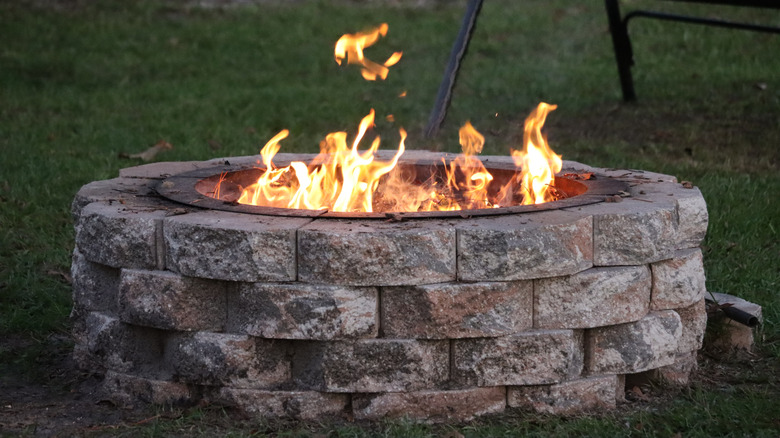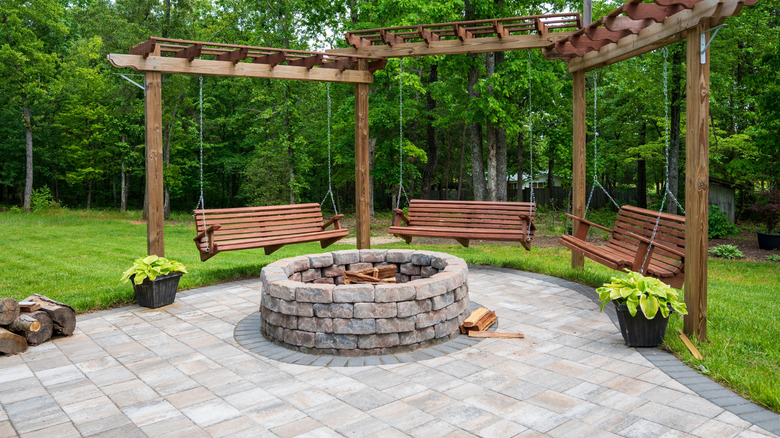How To Prevent Your DIY Fire Pit From Ever Falling Apart
Few things add as much charm and usefulness to a backyard as a fire pit. It's the perfect place to warm up in the winter with hot cocoa or spend summer nights roasting hot dogs and marshmallows. You can take advantage of many fire pit ideas to turn your outdoor living space into the perfect oasis. For all of its value, it's a fairly easy and inexpensive DIY project. However, when it comes to DIY vs. hiring a pro, there's more to consider than just budget. If you aren't careful to fireproof your materials, your fire pit could end up falling apart pretty quickly. While we tend to think of bricks and stones as being fireproof, they aren't. With repeated exposure to fire, standard brick and stone blocks will crumble.
To avoid this, you need to take precautions to fireproof your finished fire pit. You can do this in one of two ways. One option is to use a metal insert, such as a fire pit bowl or insert ring. This will provide a buffer that separates the fire from the brick, which shields it from the most intense heat. It's important to select a lining that fits well inside your fire pit to make sure it's effective.
The other way is to line the inside walls of the fire pit with clay fire bricks, which are designed to withstand the high heat long term. You can then make the outside of your fire pit with standard stone blocks or bricks. The exterior needs to be heat-resistant, but it doesn't have to be fireproof, the way the inside does. Fire bricks are effective, but they can be expensive, and they need to be installed carefully.
Building a fireproof base for your fire pit
In addition to fireproofing the inside walls, adding a fireproof bottom to your fire pit will make it a long-lasting, favorite gathering place for friends and family for years to come. Start with a strong base so your fire pit won't collapse or hold water. Dig out 3 inches of soil in the area where you're building your fire pit. Fill it with ¾ inch minus gravel, which is crushed rock or gravel pieces that are ¾ inch or smaller. The "minus" means it includes a good bit of smaller particles, such as finely crushed sand or gravel. This helps it form a firmer foundation that still allows drainage, which is ideal for a fire pit. Tamp the gravel base down, and build your fire pit on top of it.
The gravel will be adequate if you only plan to use your fire pit a few times a month. However, if you expect your fire pit to see a lot of use, you should also add a layer of fireproof material on top of the gravel base. You can use lava rock or fireproof sand for an extra layer of heat resistance. As the name suggests, lava rock is a porous rock that forms in a volcano. Fireproof sand is also called silica sand and makes a cost-effective heat barrier. As long as you properly fireproof the sides and base of your fire pit, you can choose from multiple stylish stone fire pit ideas for your summer entertaining goals.

